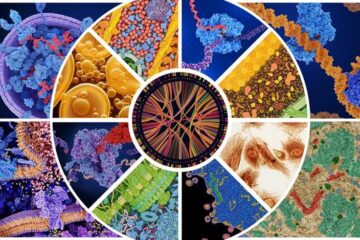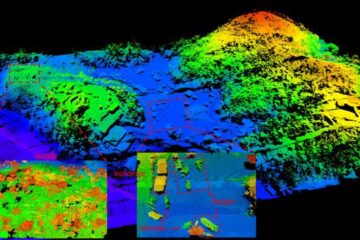Scientists discover a genetic switch that links animal growth and cancer

The findings are reported in the April 18 issue of Current Biology. Experiments were carried out by first author Masamitsu Fukuyama, a postdoctoral scientist working in the laboratories of Joel H. Rothman, a professor in the Department of Molecular, Cellular and Developmental Biology at the University of California, Santa Barbara, and Ann Rougvie, a professor in the Department of Genetics, Cell Biology, and Development at the University of Minnesota. Fukuyama is now an assistant professor at the University of Tokyo.
“The parallels between the control of development during the normal process of maturation and the control of cancer growth are striking,” said Rothman. “We recognize that cancer cells in many ways simply mimic what normal cells do in a developing animal, only at an unfortunate time and place.”
In life, there is a time to wait and a time to grow, Rothman explained. “Many creatures remain in a waiting state until conditions are right for growth. A tiny redwood, for example, can remain persistently arrested for years inside a seed. Only when the seed senses water will it sprout and initiate development into a mature tree. Many animals similarly halt their development until the environment is right for growth and development.”
The process is the same with cells, the basic units of life. Many cells remain in a quiescent state, neither growing nor multiplying until they are triggered to do so by an environmental cue, such as a hormone or injury. Cells possess braking mechanisms that keep them in this quiescent state. When the brakes fail, cells that should be static start growing and dividing, leading to cancer. These brakes are proteins called tumor suppressors.
Working with a tiny roundworm known as Caenorhabditis elegans, an important animal model in biomedical science, the researchers discovered that a tumor suppressor known as PTEN also functions to keep the animal in a waiting state by blocking cell growth when food is absent.
If these animals hatch from their eggs without any source of nutrition, they are able to remain in a perpetually young state for a long time without growing. When they eventually find food they start growing and maturing into adults. The researchers discovered that this juvenile-to-adult switch is controlled by PTEN. When the gene for PTEN is defective, the animals attempt to grow and become mature even when they have no food.
“The attempt of these animals to grow when they should not is not only analogous to the inappropriate growth and proliferation of cells during the formation of tumors in cancer, it also involves the same players,” said Rothman. The research team found that PTEN functions with two other proteins –– known as protein kinases –– that are also involved in cancer progression.
This discovery means that other proteins that keep the brakes on growth might be found by looking for additional genes that keep these animals in an immature state.
“Now that we have information about the switch that keeps animals developmentally arrested, we can readily identify other genes involved in this process,” said Rothman. Such genes might similarly be involved in the formation of cancers and could provide new therapeutic targets for intervention in cancer.
The current findings took about four years to discover. The worms used in the research develop quickly, growing from an egg to an adult in three days, as compared to mice, for example, which take several months. The similarities between the number and identity of genes in humans and worms allow researchers to extrapolate from worms to humans in their genetic research.
Media Contact
More Information:
http://www.ucsb.eduAll latest news from the category: Life Sciences and Chemistry
Articles and reports from the Life Sciences and chemistry area deal with applied and basic research into modern biology, chemistry and human medicine.
Valuable information can be found on a range of life sciences fields including bacteriology, biochemistry, bionics, bioinformatics, biophysics, biotechnology, genetics, geobotany, human biology, marine biology, microbiology, molecular biology, cellular biology, zoology, bioinorganic chemistry, microchemistry and environmental chemistry.
Newest articles

A universal framework for spatial biology
SpatialData is a freely accessible tool to unify and integrate data from different omics technologies accounting for spatial information, which can provide holistic insights into health and disease. Biological processes…

How complex biological processes arise
A $20 million grant from the U.S. National Science Foundation (NSF) will support the establishment and operation of the National Synthesis Center for Emergence in the Molecular and Cellular Sciences (NCEMS) at…

Airborne single-photon lidar system achieves high-resolution 3D imaging
Compact, low-power system opens doors for photon-efficient drone and satellite-based environmental monitoring and mapping. Researchers have developed a compact and lightweight single-photon airborne lidar system that can acquire high-resolution 3D…





















